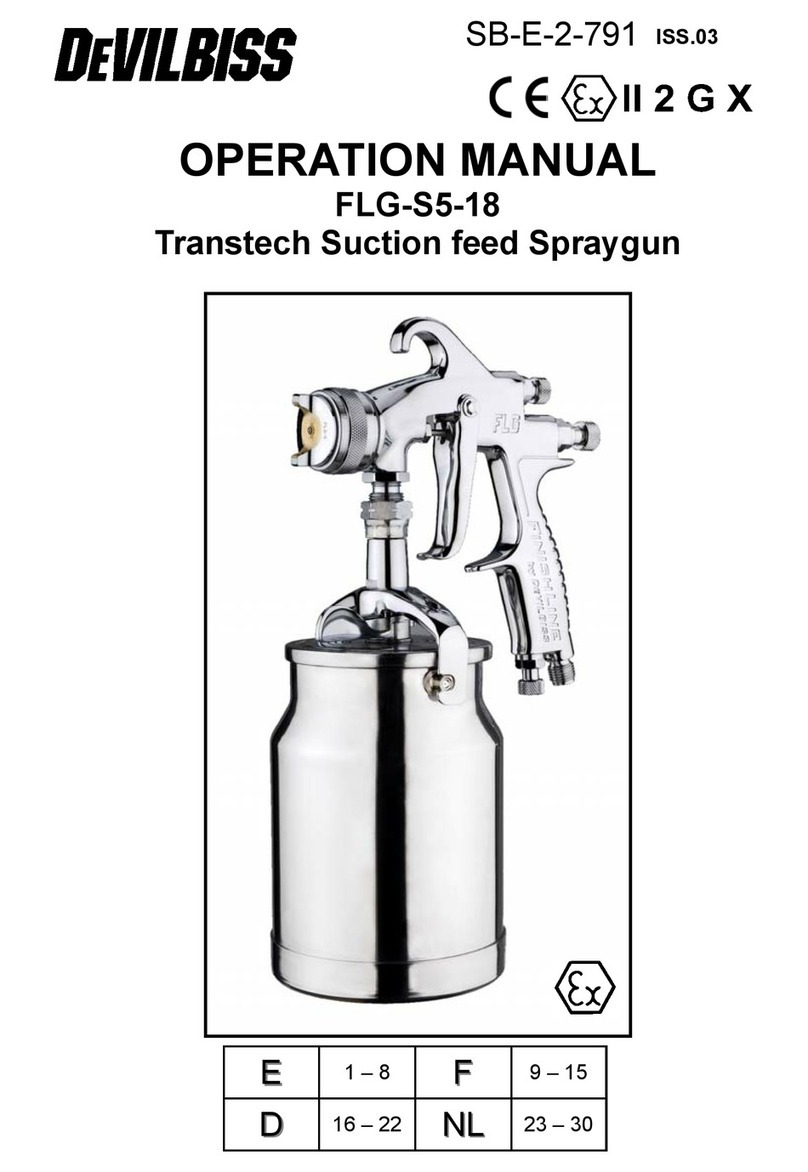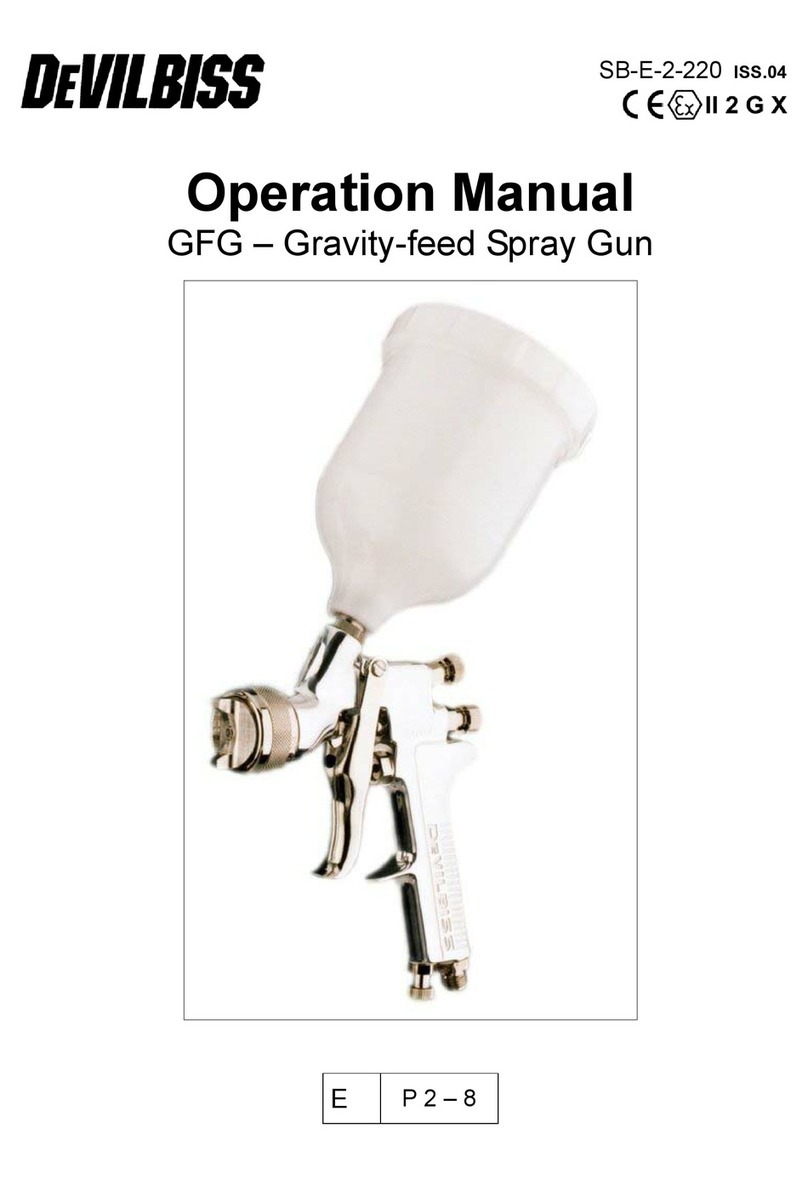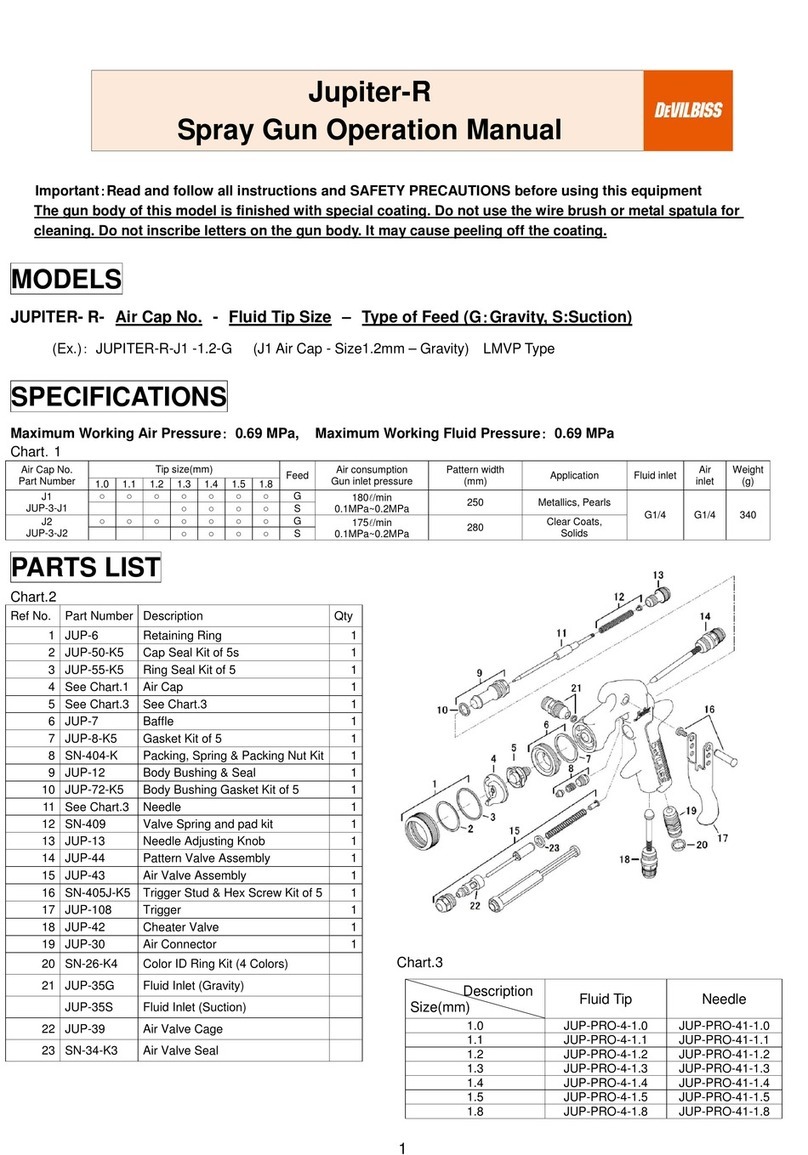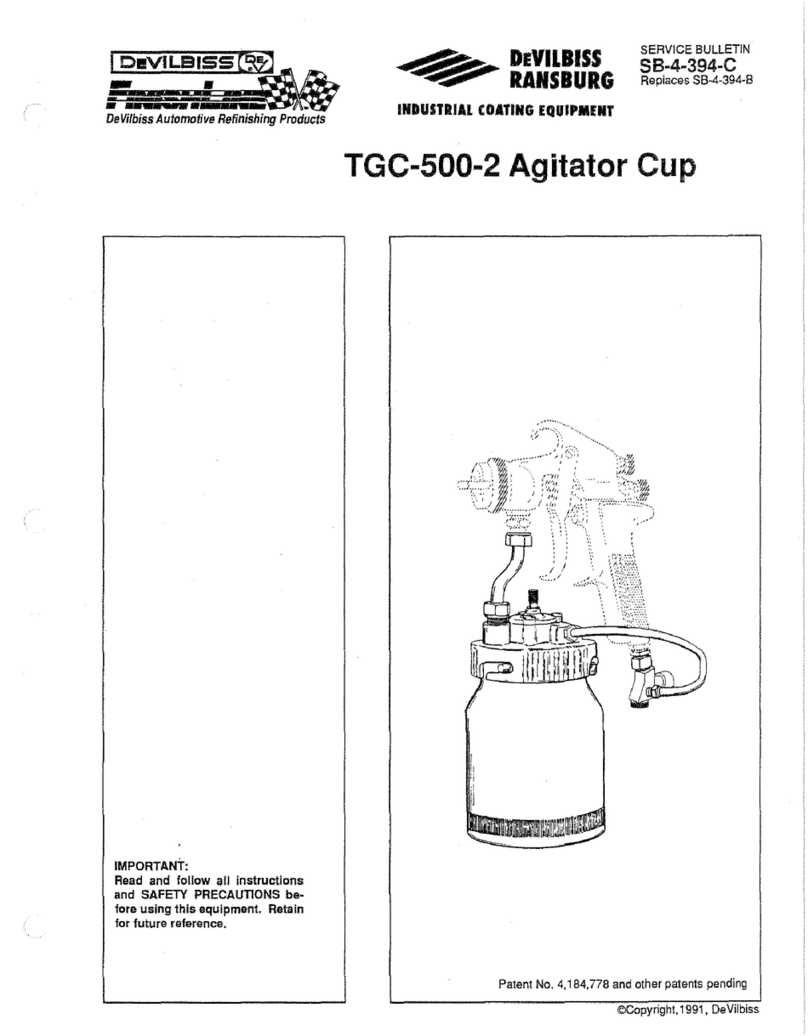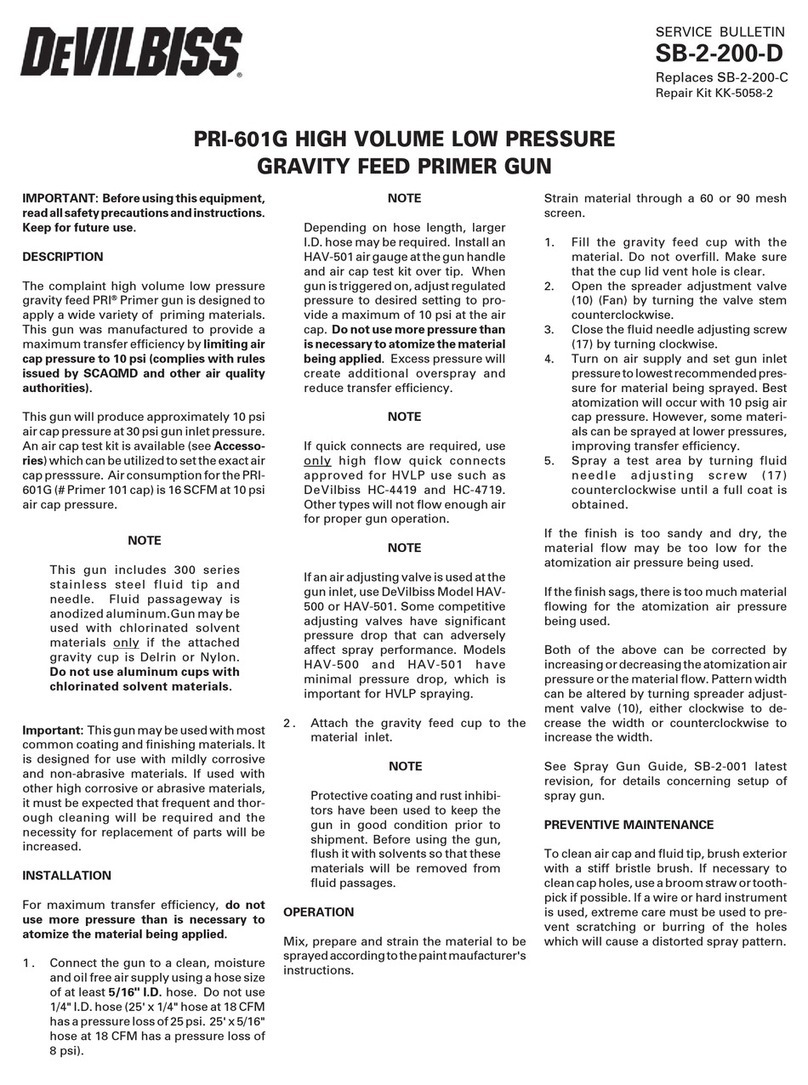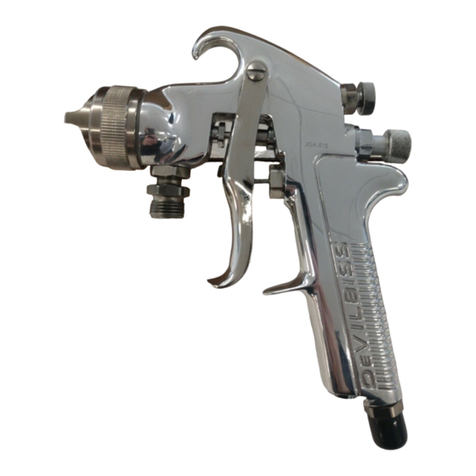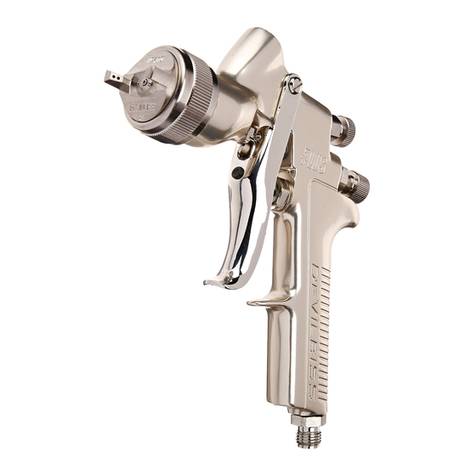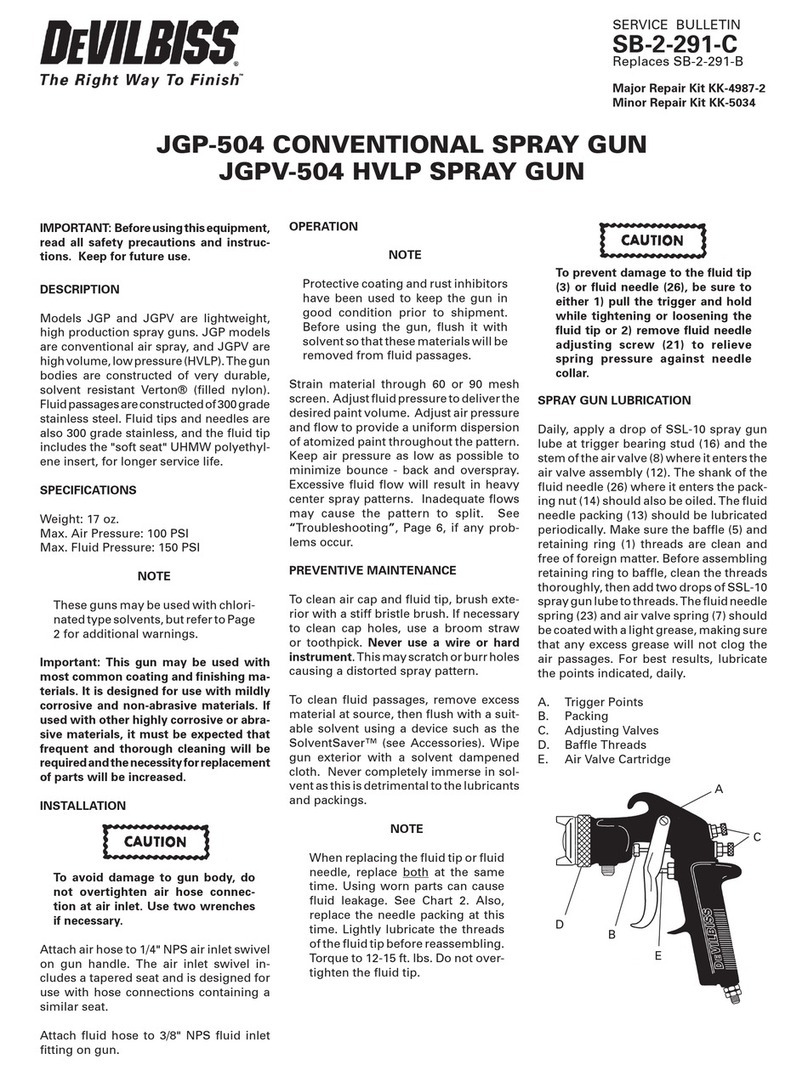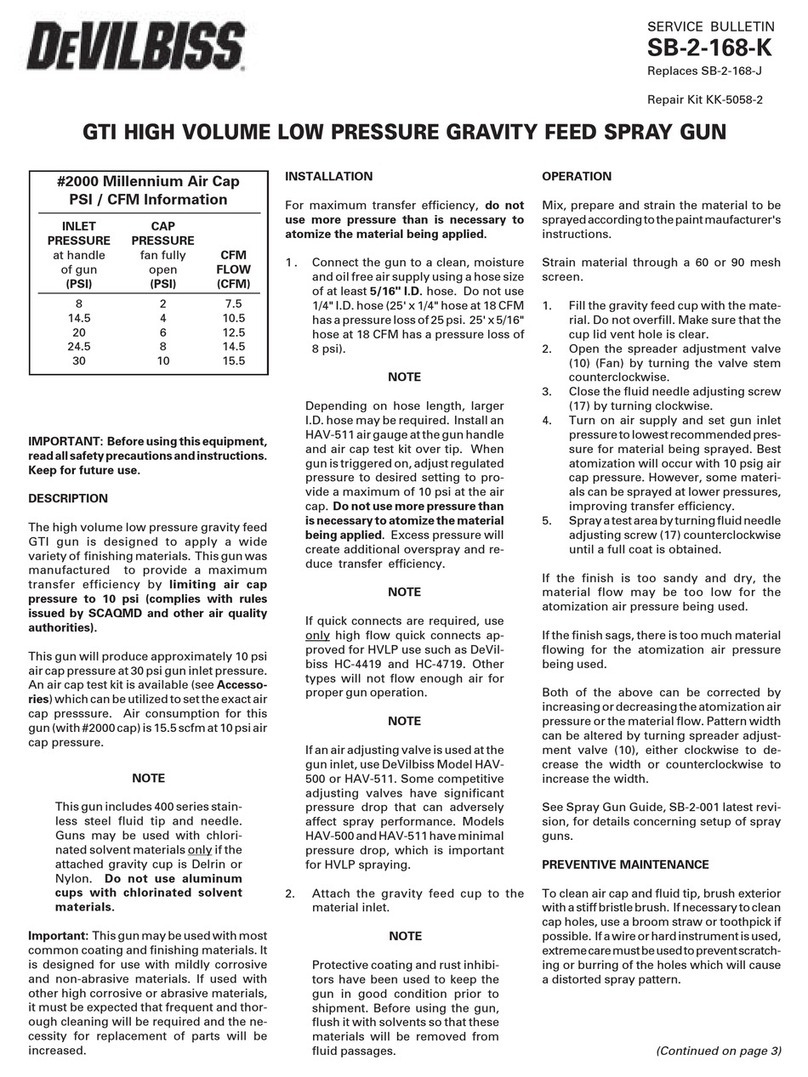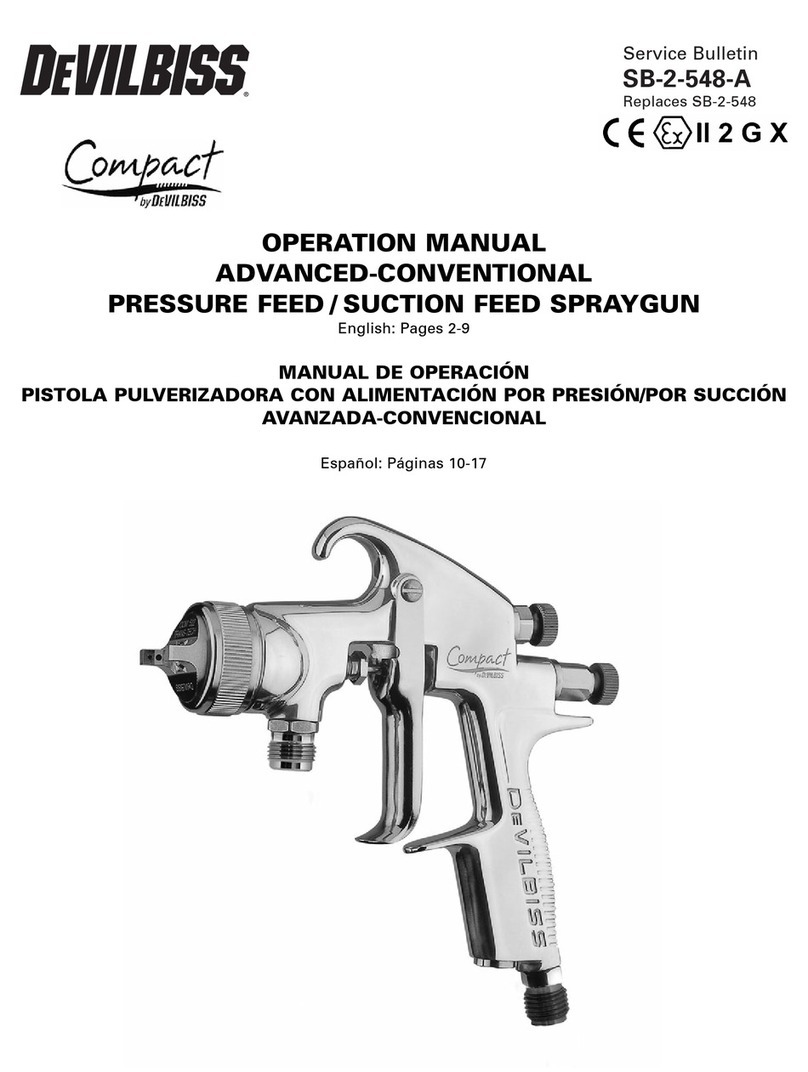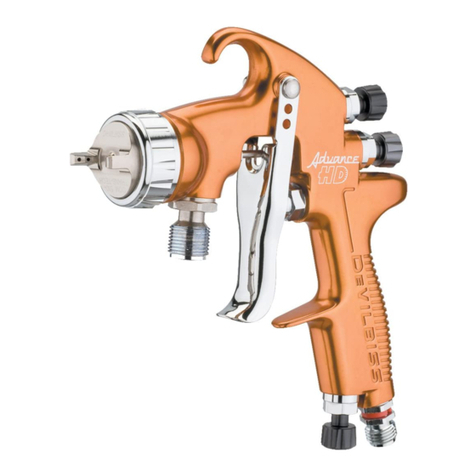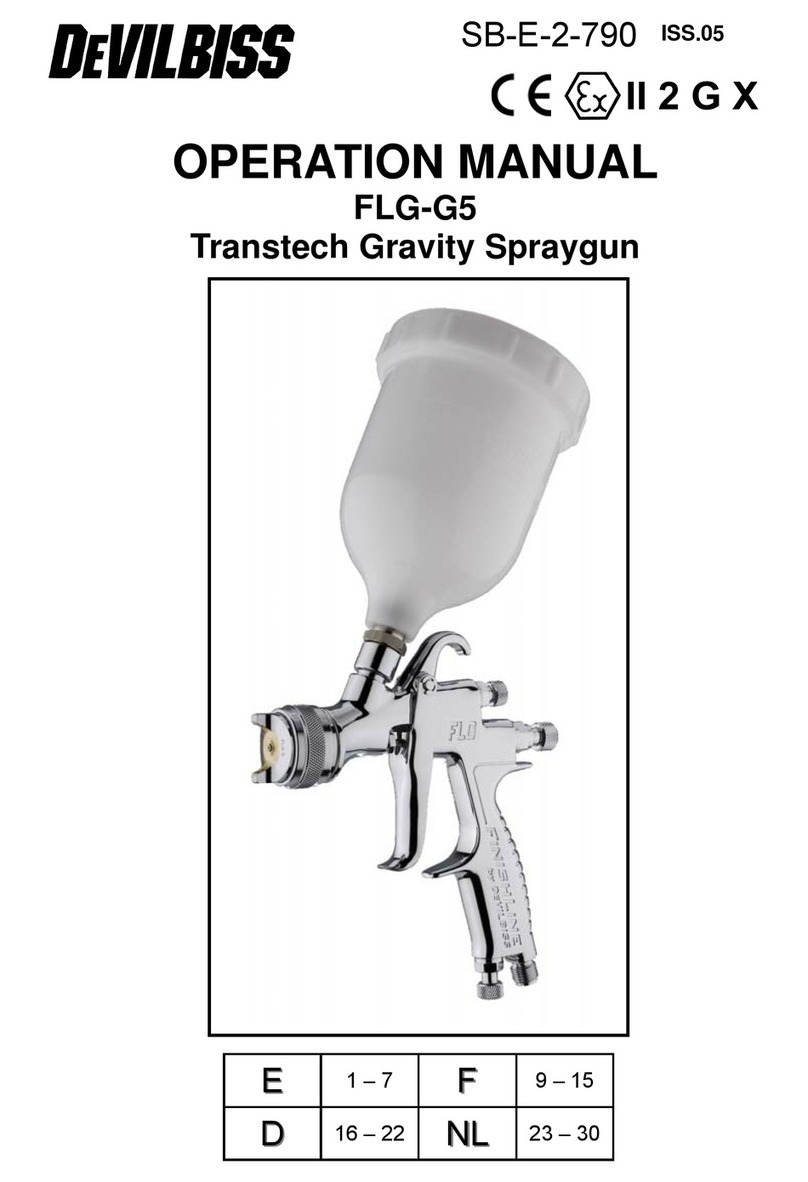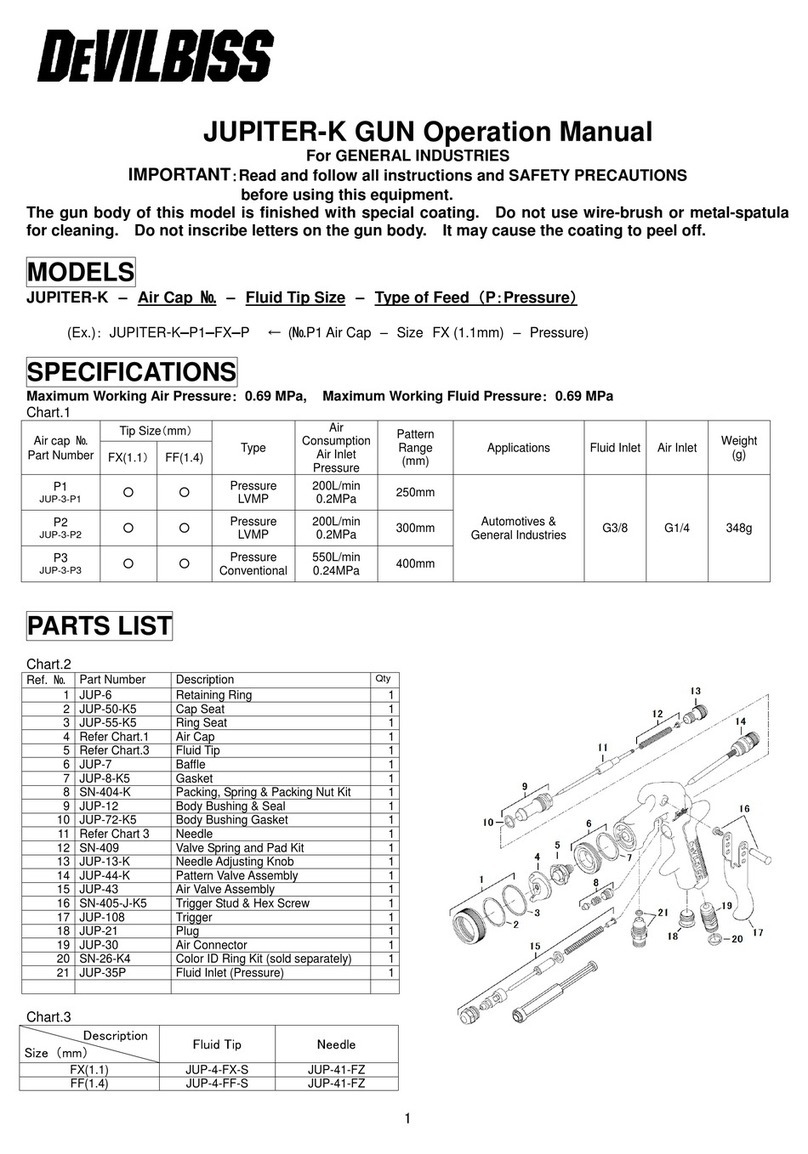
Page4
SB-2-552-D
3.
Pull
gun
trigger until activator begins
spraying
out
of
the
air
cap horns.
4.
Afteractivator
flow
has stabilized,
lower
the activator flow by closing the
flow
meter
adjustment knob clockwise. Ad-
just
until afine mist comes
out
of
the
air
cap horn holes.
Notes
Activator flow must overcome back
pressure created
by
air cappressure.
You
may have
to
Increase actfvator
tank pressure slightly
to
overcome
this back pressure. The amount
of
back pressure Is dependent
upon
the
air cap pressure.
On
new
guns, it may require higher
air pressure
to
the
gun
to
Initially
actuate
the
activator valve. Refer
to
Page 7, "Break-In" procedure (new
guns).
APPLICATION
Normal application of contact adhesive ·is
equal
to
approximately 7 gramspersquare
foot. Thiswill
not
resultin acontinuousfilm.
Rather, a coarse, random spot atomization
pattern
will
resultwhich is desirable. Apply
this
~pebbled"
film to both sutfaces. Follow
themanufacturer'sinstructionsfortacktime
before bonding. Some adjustments
to
acti-
vator concentration may
be
required.
Adjustments
to
the adhesive pressure
will
require re-calibration
of
both components.
CLEAN
UP
Refer
to
the manufacturer's instructions.
DeVilbiss recommends
each
component be
slowly pushed out
of
both hoses using a
lukewarm water and soap solution recom-
mended
by
the supplier. Do
not
attempt
to
blow
components back. Clean
out
from
supply source forward only.
If adhesive and activator are flushed
out
daily, DeVilbiss recommends all liquid lines
be
kept filled
with
the clean out water solu-.
tion, until system is used again.
Ifsystem is notflushed daily, DeVilbiss rec-
ommends the following:
1.
Turn
off
supply ball valve at activator
source.
2.
Turn
off
supply ball valve at adhesive
source.
3.
Removeanyadhesiveaccumulationfrom
the
air
cap surfaces
(see
PREVENTIVE
MAINTENANCE
for
cleaning instruc-
tions).
4.
Removeadhesiveaccumulationfromface
of
fluid tip.
5.
Wipe exterior
of
baffle with a wet rag
to
remove activator. Clean baffle and re-
taining ring threads.
6.
Store gun
with
nozzle pointed down-
ward, preferably in a shallow container
of
clean water.
The activatorflow
can
be
affected byfluctu-
ating supply pressures, increasing
or
de-
creasing atomizing air, adjustment to the
fan pattern,aplugged activatorfilterscreen,
or
aplugged.020"
(.5
mm)orificefitting (36).
If there appears to
be
no
reason
for a re-
ducedactivatorflow, removepressurefrom
supply. Check for blockage in the .020"
(.5
mm) orifice fitting
(36)
located at the
activator valve. Inspect filter screen. If
acoumulation
is
present clean or replace
screen
(46),
or
orifice fitting
(36).
PREVENTIVE
MAINTENANCE
A gun lube sample
(1.5
ml) is included in
each
gun
package.
SSL-10
gun lube is also
availablein 2
oz.
(66
ml)bottles
(see
ACCES-
SORIES
section
on
Page
11)
and
can
be
ordered from your DeVilbiss distributor.
Additional lubrication pointson the gun
are
shown.
A. Trigger points
B.
Needle
Packing
C.
Adjusting screw
threads
D.
Baffle and retaining ring threads
E.
Air
valve cartridge
The
needle spring
(12)
and airvalve spring
(17) should
be
coated
with
a light grease.
Make sure that any excess grease does not
clog the air
passages.
For best results,
lubricate the points indicated daily using
SSL-10 gun lube.
Air
Cap
-Remove air
cap
from gun and
brush exteriorwith bristle brush and appro-
priate cleaning agent. Blow dry with com-
pressed air.
Ifsmallholesin
the
aircap becomeplugged,
soak cap
in
cleaning agent. Ifreaming holes
is
necessary,
use
a toothpick, broomstraw
or
some other soft implement (Figure
6).
Cleaning holes with a wire, nail
or
similar
hard object may damage cap by enlarging
jets, resulting in adefective spray pattern.
Figure 6 Cleaning Air
Cap
PARTS REPLACEMENT
To
prevent
damage
to
the
fluid
tip
(3A)
or
needle(38),
be
sure
to
either
1)
pull
the
trigger
and
hold
while
loosening
or
tightening
the
fluid
tip;
or
2) remove needle
adjusting
screw
(13)
to
relieve
spring
pressure.
When
replacing
the
fluid
tip
or
fluid
needle,
both
should
be
replaced
as a
lapped set
to
prevent leakage.
When installing the
new
fluid
tip,
tighten
to
a
torque
of20-25
ft.lbs.
(27.2-
34 N•m).
Fluid
Inlet
Gasket (27)
Replacement
Instructions
1.
Removefluid inletadapter
with
appro-
priate wrench.
2.
Clean Loctite
from
gun
body
inlet
threads, threads
of
inlet
fitting
(29),
and
seal area.
3.
Place gasket (27) squarely
onto
the
fluid
inlet adapter and push
it
down
until
it
is flat against
the
boss.
4.
Place a couple
of
drops
of
thread seal-
ant
(i.e.LoctiteMed.Strength242, Blue)
on
threads before installing fluid inlet
adapter.
5.
Torque
fluid
inlet
adapter
25-30
ft.lbs.
(34-
41
N•m) and tighten locknut until
snug.

